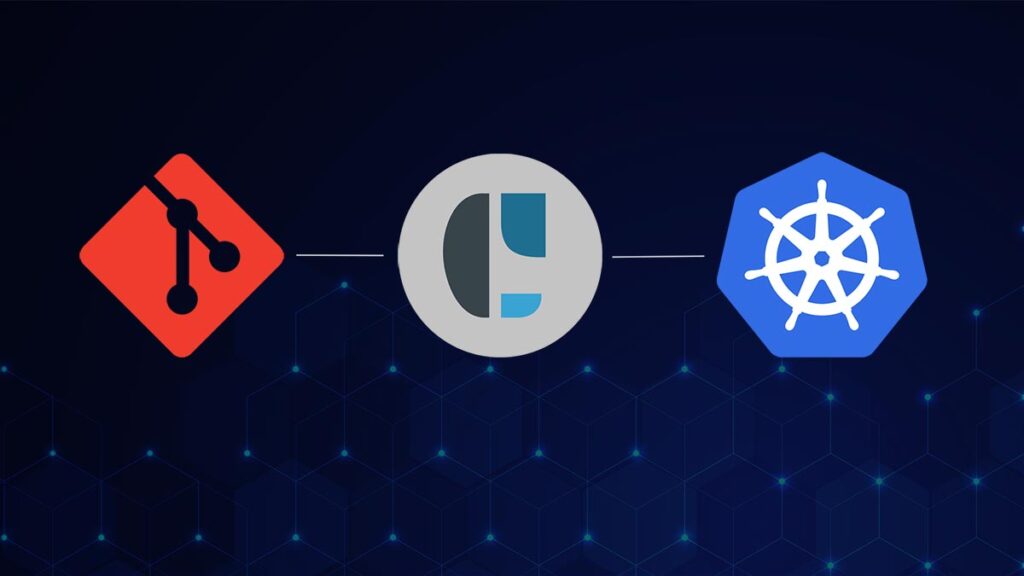Mastering CI/CD with Kubernetes is crucial for developers in today’s software development environment. This approach speeds up development and ensures reliable, scalable deployments.
In recent years, when it comes implementing CI/CD, the focus has shifted from Continuous Integration (CI) to improving deployment and delivery quality using Kubernetes’ scaling capabilities (good read on the evolution of CI/CD tooling here). This change is due to the growing complexity of applications and the need for robust, automated deployment strategies to handle continuous delivery (CD) and operations (Ops) effectively.
By emphasizing deployment and delivery, developers ensure their applications are integrated and deployed consistently, reliably, and scalably. Kubernetes, with its powerful orchestration capabilities, plays a key role in this transformation.

In this article, we discuss essential practices and challenges to help you get the most out of CI/CD with Kubernetes.
Essential CI/CD Practices and Kubernetes Practices
Implement GitOps
- Best Practice: Define environments with Infrastructure as Code and automate testing and deployment via CI/CD pipelines. Ensure alignment with desired states through continuous monitoring and observability. Manage secrets securely.
- Impact: Provides reliable rollback, enhances traceability, and reduces configuration drift.
- Challenges: Learning GitOps concepts and tools can be daunting, requiring proficiency in managing infrastructure as code and integrating continuous deployment pipelines.
Containerize Your Applications
- Best Practice: Use languages like Node.js, Python, Java, and Go to containerize applications. Containers package applications with their dependencies, ensuring consistent performance across environments.
- Impact: Ensures consistency, reduces deployment errors, and simplifies scaling.
- Challenges: Managing dependencies and configurations within Kubernetes can be complex, especially for large-scale deployments.
Use Immutable Infrastructure
- Best Practice: Treat infrastructure components as immutable, changing only with new deployments.
- Impact: Simplifies management, reduces configuration drift, and ensures reliable rollbacks.
- Challenges: Requires robust CI/CD pipelines, comprehensive testing, and separate handling of data persistence for stateful applications.
Leverage Progressive Delivery
- Best Practice: Use advanced deployment strategies like blue/green, canary, and A/B testing to minimize downtime and failure risks.
- Impact: Enables smoother transitions and upgrades, improving user experience.
- Challenges: Setting up and configuring these strategies can be complex
Automate Your Testing
- Best Practice: Establish automated testing to maintain high-quality deployments and continuous feedback loops.
- Impact: Ensures consistent and reliable deployments.
- Challenges: Setting up and managing test environments, dependencies, and ensuring consistent results can be difficult.
Implement Monitoring and Observability
- Best Practice: Apply tools like Prometheus and Jaeger to monitor application performance and set up alerts for failures.
- Impact: Improves reliability and performance, ensuring issues are detected and resolved quickly.
- Challenges: Managing the complexity of dynamic components and the vast amount of data generated.
Utilize Multi-Cloud and Hybrid Cloud Strategies
- Best Practice: Embrace multi-cloud and hybrid cloud strategies to enhance flexibility, resilience, and compliance.
- Impact: Ensures robust disaster recovery and consistent deployments across environments.
- Challenges: Different environments have unique quirks that can impact deployment consistency. Enterprise policies, regulatory and geographical factors will make deployments more complex.
Adopt Pull-Based CI/CD Workflows for Better Security
- Best Practice: Employ pull-based workflows for enhanced security, minimizing the exposure of privileged credentials.
- Impact: Reduces the risk of credential compromise and ensures cluster state sync with source control.
- Challenges: Setting up and configuring pull-based workflows can be complex.
Conclusion
Combining CI/CD with Kubernetes is transformative for modern software development. By following best practices like app containerization, GitOps, immutable infrastructure, progressive delivery, test automation, monitoring, multi-cloud strategies, and pull-based workflows, developers can achieve faster, more reliable, and secure deployments. Embracing these practices will help development teams stay ahead in the ever-evolving tech landscape, ensuring smooth and efficient software delivery.

CAEPE Continuous Deployment
Manage workloads on Kubernetes anywhere robustly and securely.
- Shores up security by simplifying deployment anywhere, supporting managed services, native Kubernetes, self-hosted, edge and secure airgapped deployment targets.
- Supports GitOps and provides guided, UI-driven workflows for all major progressive delivery strategies.
- Has RBAC built-in, providing inherent enterprise access control for who can deploy.
- Supports extended testing capabilities enabling your team to run different tests quickly and easily.


